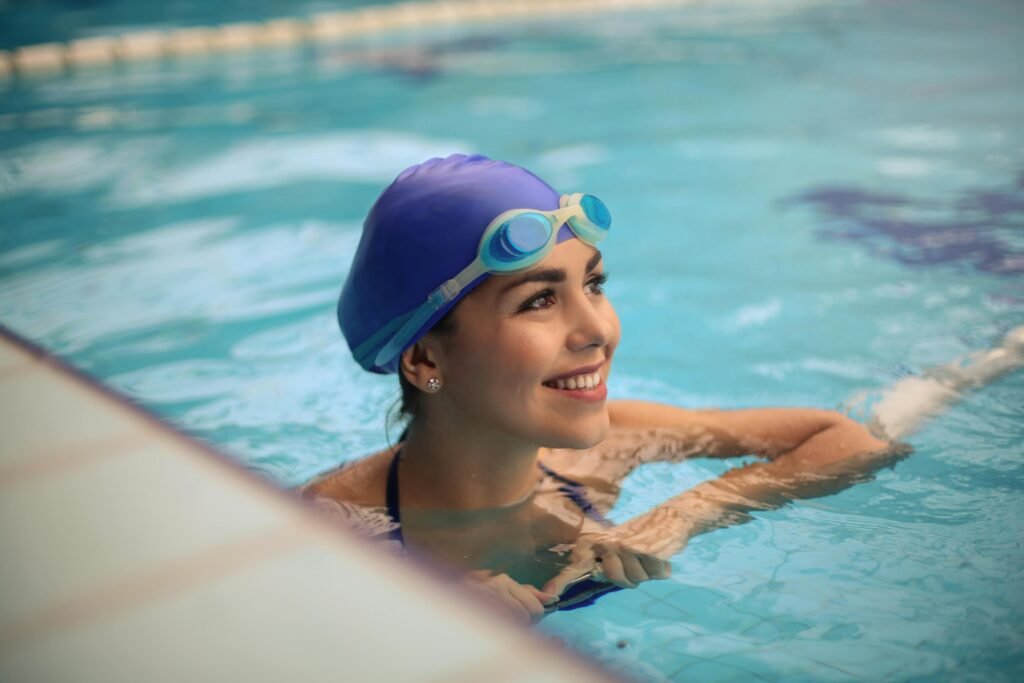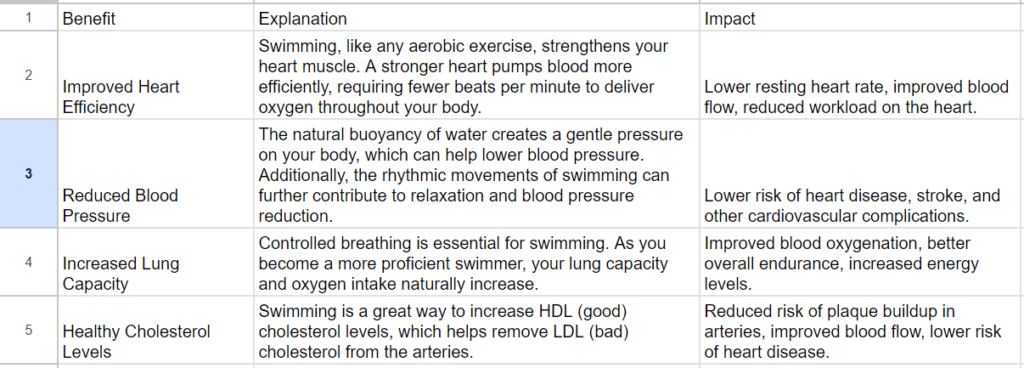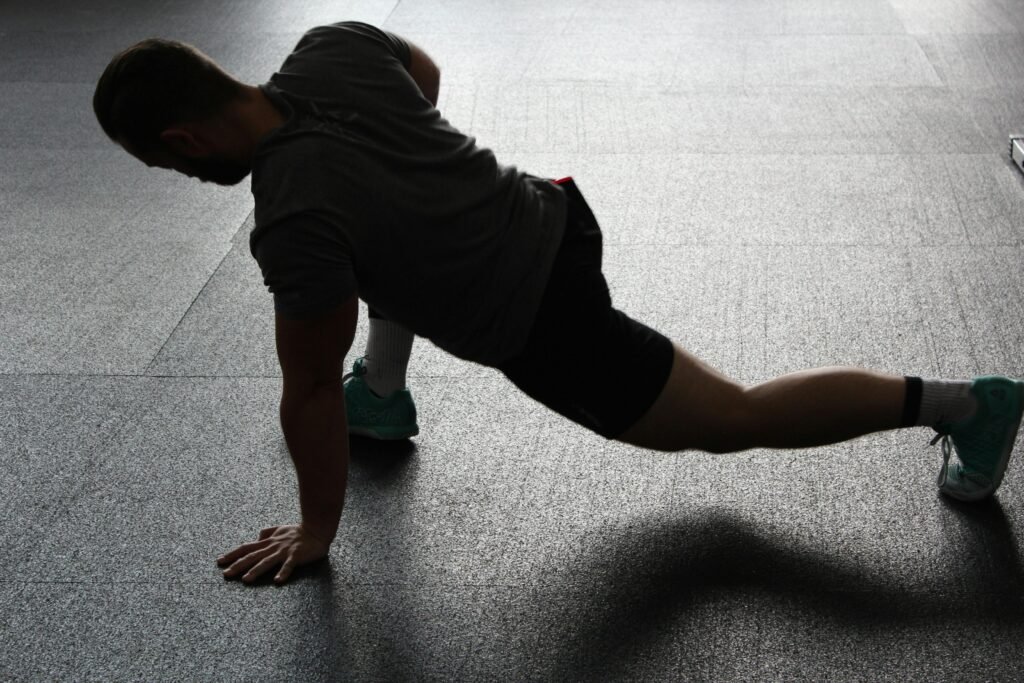When it comes to fitness, few activities offer the holistic benefits that swimming does. This low-impact exercise is not only a fantastic way to cool off on a hot day but also a comprehensive workout that can transform your body in myriad ways. Whether you’re a seasoned swimmer or just dipping your toes in the water, understanding how swimming changes your body can motivate you to make it a regular part of your fitness routine.

In this blog post, we’ll explore the physical, mental, and even emotional transformations that swimming can bring about. We’ll delve into the science behind these changes, share personal stories, and offer tips to help you maximize the benefits of swimming workouts. So, grab your goggles and let’s dive in!
Here we are diving into the following topics:
- Physical benefits of swimming
- Cardio vascular health
- Enhance flexibility and mobility
- Dive into Weight Loss: How Swimming Can Help You Slim Down
- Increased Muscle Strength and Endurance
- The Mental and Emotional Benefits of Swimming
- Swimming for Different Age Groups
- Personal stories
The Physical Benefits of Swimming
1. Whole Body Workout: The Many Parts Used in Swimming
Swimming is a fantastic exercise lauded for its low impact and ability to engage multiple muscle groups. Unlike running, which primarily targets the legs, swimming truly is a full-body workout. But exactly which body parts are used when you take the plunge?
Core Engagement: The Engine Room
Your core, consisting of your abdominal and lower back muscles, acts as the stabilizer for your entire body. In the water, where there’s no solid ground to push off from, a strong core is essential for maintaining a streamlined position and efficient movement. Imagine a powerful engine – your core transmits energy between your upper and lower body with every stroke.
Arms and Shoulders: Pulling for Propulsion
From powerful pulls to delicate sculling motions, your arms and shoulders do a lot of work in the water. Different strokes emphasize different muscles. Freestyle, for example, works your triceps for pulling yourself through the water, while backstroke strengthens your upper back muscles.
Legs and Hips: Kicking Up a Splash
Don’t underestimate the importance of your legs! A strong kick, often a flutter kick in most strokes, propels you forward and helps maintain body balance. This kicking motion engages your quadriceps (front thighs), hamstrings (back thighs), and calves, keeping your lower body strong.
Don’t Forget the Unsung Heroes
While core, arms, legs, and hips take center stage, other body parts play a supporting role. Your neck and spine help you maintain proper posture and body rotation for efficient swimming. Even your hands and wrists contribute with movements like sculling or cupping water during strokes.
The Total Package
Swimming isn’t just about one specific muscle group; it’s a symphony of coordinated movement throughout your entire body. This holistic approach leads to a well-rounded workout that builds strength, endurance, and flexibility. So, next time you hit the pool, take a moment to appreciate the incredible work all parts of your body are doing to help you glide through the water.
2. Swimming Improves Cardiovascular Health:
Swimming is a fantastic exercise for overall health, and its impact on your cardiovascular system is particularly impressive. Here’s a breakdown of how swimming strengthens your heart and improves circulation:

Additional Factor:
- Stroke Variety: Different swimming strokes emphasize different muscle groups and can impact cardiovascular health in varying ways. Freestyle and butterfly strokes tend to be more demanding on the heart and lungs.
- Intensity: The intensity of your workout plays a crucial role. Moderate-intensity swimming (where you can comfortably hold a conversation) is beneficial, while high-intensity interval training (alternating bursts of fast swimming with rest periods) can further boost cardiovascular health.
Overall, swimming is a low-impact, accessible, and enjoyable exercise that offers significant benefits for your cardiovascular system. By incorporating regular swimming into your routine, you can strengthen your heart, improve blood flow, and reduce your risk of various cardiovascular diseases
3. Enhanced Flexibility and Mobility
Swimming isn’t just about conquering laps or achieving peak speed. This aquatic exercise offers a hidden gem – a significant boost to your flexibility and mobility. Let’s explore how taking the plunge can unlock a wider range of motion and keep you moving with ease.
Full-Body Movement: A Symphony of Stretch
Unlike gym machines that isolate specific muscles, swimming engages your entire body in a continuous range of motion. Every stroke – from the windmill of freestyle to the undulating backstroke – stretches and lengthens various muscle groups. Your shoulders rotate, your spine twists, and your hips open up, all while propelling you forward. This constant movement lubricates your joints and improves their range of motion.
Buoyancy: A Gentle Stretch
Water’s buoyancy plays a crucial role in enhancing flexibility. Unlike on land, where gravity pulls you down, the water supports your body weight. This allows for a deeper and safer stretch, especially for those with tight muscles or joint limitations. You can explore movements that might be challenging on solid ground, all while minimizing stress on your joints.
Low-Impact Advantage: Stretching Without Strain
Swimming’s low-impact nature is another benefit for flexibility. Unlike high-impact exercises that can lead to muscle soreness and tightness, swimming allows for a gentle stretch that improves flexibility without causing strain. This makes it a perfect choice for people recovering from injuries or those new to flexibility training.
Beyond the Pool: Lasting Benefits
The enhanced flexibility you gain from swimming translates to your everyday life. Whether it’s reaching for a high shelf or bending down to tie your shoes, you’ll find a newfound ease of movement. Improved flexibility can also help prevent injuries and improve your posture, leading to a more confident and pain-free life.
Taking the Plunge: Tips for Enhanced Flexibility
To maximize the flexibility benefits of swimming, consider these tips:
- Warm up before you dive in. Light stretches and dynamic movements prepare your muscles for the workout.
- Focus on form, not speed. Proper technique ensures you target the right muscles and achieve a deeper stretch.
- Incorporate dynamic stretches. Movements like arm circles and leg swings while in the water can further enhance flexibility.
- Hold your stretches. Hold each stretch for 15-30 seconds to maximize its effectiveness.
- Listen to your body. Don’t push yourself too hard, especially if you’re new to swimming or flexibility training.
Swimming is a fantastic way to improve your overall well-being, and its impact on flexibility is undeniable. So, the next time you’re looking for a workout that strengthens your body and frees your movements, consider taking a dip in the pool. You might be surprised by the newfound freedom you discover in the water.
4. Dive into Weight Loss: How Swimming Can Help You Slim Down
Swimming isn’t just a refreshing way to beat the heat; it’s a powerful tool for weight loss. Here’s why taking the plunge can be a splash for your fitness goals.
Burning Calories: The Engine of Weight Loss
Swimming is a calorie-torching exercise. Depending on your intensity and stroke, a 30-minute session can burn anywhere from 300 to 700 calories. Freestyle, for example, is a great calorie burner, while the butterfly stroke, though more challenging, can burn even more.
Low-Impact Advantage: Easy on the Joints
Unlike high-impact exercises like running, swimming is gentle on your joints. The water’s buoyancy supports your body weight, minimizing stress on your knees, ankles, and back. This makes swimming a great option for people of all fitness levels, including those with injuries or joint pain.
Variety is the Spice of Weight Loss
Swimming offers a variety of strokes and drills to keep your workouts interesting and challenging. You can alternate between freestyle, backstroke, breaststroke, and butterfly to target different muscle groups and prevent plateaus in your weight loss journey.
5. Increased Muscle Strength and Endurance
Swimming isn’t just about gliding gracefully through the water. It’s a fantastic way to build muscle strength and endurance, making you a powerhouse on land and in the pool. Let’s dive into how swimming can transform your physique and boost your stamina.
Engaging Your Entire Body: A Symphony of Strength
Unlike weightlifting, which isolates specific muscles, swimming works multiple muscle groups simultaneously. Every stroke, from the powerful pull of freestyle to the undulating kick of the butterfly, engages a different combination of muscles. This constant engagement builds strength throughout your body, creating a well-rounded foundation of fitness.
Building Muscle with Resistance:
Water provides natural resistance in all directions. As you move through the water, your muscles constantly contract to overcome this resistance. This continuous effort leads to muscle growth and increased strength, particularly in your core, shoulders, back, arms, and legs.
Endurance for Long Distances:
Swimming is an aerobic exercise, meaning it requires sustained effort over an extended period. As you swim laps, your body becomes more efficient at using oxygen, which translates to improved cardiovascular health and overall endurance. You’ll find yourself swimming for longer distances with greater ease.
Low-Impact Advantage: Building Without Breaking Down
Swimming is a low-impact exercise that’s gentle on your joints. Unlike high-impact activities like running, which can cause stress and injuries, swimming allows you to build strength and endurance without the risk of excessive wear and tear. This makes it a perfect exercise for people of all ages and fitness levels.
Variety is the Spice of Strength:
There are many different swimming strokes, each targeting different muscle groups and offering varying levels of intensity. Freestyle, for example, is a great all-around workout, while butterfly focuses on upper body strength. By incorporating a variety of strokes into your routine, you can challenge different muscle groups and prevent plateaus in your strength development.
Taking the Plunge: Tips for Strength and Endurance
To maximize your strength and endurance gains from swimming, consider these tips:
- Interval training: Alternate between high-intensity bursts (faster laps) and recovery periods (slower laps) to build both strength and endurance.
- Focus on form: Proper technique ensures you target the right muscles and get the most out of your workout.
- Gradually increase intensity and duration: Don’t overdo it initially. Gradually increase the intensity and duration of your workouts to avoid injuries and allow your body to adapt.
- Incorporate strength training outside the pool: Complement your swimming with exercises that target specific muscle groups for an extra boost in strength.
Swimming is a fantastic way to build muscle strength, improve endurance, and create a strong, resilient body. So, the next time you’re looking for a challenging and rewarding workout, head to the pool and take the plunge. You might be surprised by the powerhouse you become.
The Mental and Emotional Benefits of Swimming
1. Stress Relief and Relaxation
Swimming is known for its calming effects. The rhythmic nature of swimming, combined with the soothing sensation of water, can help reduce stress and promote relaxation. Many people find swimming to be a meditative experience, providing a mental break from the hustle and bustle of daily life.
2. Improved Mood and Mental Health
Engaging in regular physical activity, like swimming, releases endorphins – the body’s natural “feel-good” hormones. These endorphins help boost your mood and combat feelings of anxiety and depression. Swimming can also improve sleep quality, which is essential for overall mental health.
3. Enhanced Cognitive Function
Exercise, including swimming, has been shown to enhance cognitive function. The increased blood flow to the brain and the release of growth factors that support the survival of neurons can improve memory, focus, and overall cognitive performance.

Making a Splash at Any Age: How Swimming Benefits People of All Ages
Swimming isn’t just a fun way to cool off on a hot day; it’s a fantastic exercise suitable for people of all ages. From toddlers taking their first tentative dips to seniors seeking a low-impact workout, swimming offers a unique set of benefits that adapt to your changing needs throughout life.
Early Years (0-5 years old):
- Building Confidence in the Water: Introducing young children to the water through play builds confidence and familiarizes them with a potentially life-saving skill.
- Motor Skill Development: Swimming movements engage various muscle groups, promoting coordination and overall motor skill development in young children.
- Socialization and Fun: Group swimming lessons can be a fun and social experience for young children, fostering interaction and teamwork.
Childhood and Adolescence (6-18 years old):
- Developing Athletic Skills: Swimming provides a strong foundation for other sports, building strength, endurance, and coordination.
- Competitive Opportunities: Organized swim teams offer a chance for competitive spirit and goal setting, promoting discipline and teamwork.
- Lifelong Fitness Habits: Establishing a love for swimming in childhood can lead to a lifelong habit of healthy exercise.
Adults (19-64 years old):
- Full-Body Workout: Swimming engages multiple muscle groups, offering a well-rounded workout that strengthens and tones your entire body.
- Cardiovascular Health: Swimming is a fantastic way to improve cardiovascular health, reducing the risk of heart disease and stroke.
- Low-Impact Exercise: The buoyancy of water makes swimming a gentle exercise on your joints, ideal for those with injuries or joint pain.
- Stress Relief: The rhythmic movements and calming environment of the pool can help reduce stress and promote relaxation.
Seniors (65+ years old):
- Maintaining Mobility and Flexibility: Swimming helps maintain flexibility and range of motion in your joints, promoting overall mobility and independence.
- Balance and Coordination: Water exercises can help improve balance and coordination, reducing the risk of falls.
- Social Connection: Group swimming classes can be a fun way for seniors to stay socially connected and engaged.
- Mental Well-being: Swimming can be a mood booster, promoting mental well-being and reducing symptoms of depression and anxiety.
No Matter Your Age, There’s a Perfect Stroke:
Swimming offers a variety of strokes, each catering to different fitness levels and preferences. Freestyle, backstroke, breaststroke, and butterfly all provide unique challenges and benefits. Consult a swim instructor to find the stroke that best suits your age, fitness level, and goals.
Making the Plunge: Tips for Swimming at Any Age
- Start slow and gradually increase intensity.
- Focus on proper technique to avoid injuries and maximize benefits.
- Find a swim buddy or join a group class for motivation and socialization.
- Listen to your body and take breaks when needed.
- Most importantly, have fun!
Swimming is a gift that keeps on giving. So, regardless of your age, head to the pool and discover the joys and benefits of moving through the water. You might just surprise yourself with what you can achieve!
Personal Stories: How Swimming Changed Lives
1. Sarah’s Transformation
Sarah, a 35-year-old mother of two, struggled with weight management and stress after the birth of her second child. She decided to join a local swimming class as a way to get back in shape. Over the course of a year, Sarah lost 30 pounds and noticed a significant improvement in her mental health. She found swimming to be a peaceful escape from her busy life, and it became her favorite way to unwind.
2. Tom’s Rehabilitation Journey
Tom, a 50-year-old construction worker, suffered a severe back injury that left him unable to perform high-impact exercises. His physical therapist recommended swimming as part of his rehabilitation. Through consistent swimming sessions, Tom regained his strength and mobility without aggravating his injury. He now swims regularly and credits it with his full recovery.
3. Emily’s Battle with Anxiety
Emily, a 28-year-old graphic designer, battled anxiety for years. She found traditional workouts to be overwhelming and struggled to stick with them. A friend suggested she try swimming, and it changed her life. The rhythmic breathing and sensory experience of swimming helped Emily manage her anxiety. She felt more centered and calm after each swim, and it became an essential part of her self-care routine.
4. Zahir’s (Writer) Transformation of Body By Swimming:
Hi, I’m Zahir, a 30-year-old Merchant Marine Officer. Before choosing this career path, I couldn’t swim and was quite thin with minimal muscle. However, after passing the written exam for a prestigious Marine Academy, I had to learn how to swim to qualify for the practical exam. It was a challenging month of dedicated swimming lessons.
One day, after finally mastering swimming, I looked in the mirror and barely recognized myself! My body had completely changed. I had developed a broad back, strong shoulders, powerful legs, and a defined stomach – all without a trace of excess fat. This experience opened my eyes to the dramatic impact swimming can have on the human body.
Tips to Maximize the Benefits of Swimming
1. Vary Your Strokes
Different swimming strokes target different muscle groups and provide varied intensity levels. Incorporate a mix of freestyle, breaststroke, backstroke, and butterfly into your routine to ensure a balanced workout.
2. Set Goals and Track Progress
Set specific, measurable goals for your swimming workouts. Whether it’s improving your lap time, increasing the number of laps, or mastering a new stroke, having clear objectives can keep you motivated and help you track your progress.
3. Incorporate Interval Training
Interval training, which involves alternating between high-intensity and low-intensity swimming, can boost your cardiovascular fitness and calorie-burning potential. Try swimming at a fast pace for a few laps, then slow down for a recovery lap.
4. Focus on Technique
Proper technique is crucial for maximizing the benefits of swimming and preventing injuries. Consider taking lessons or working with a coach to ensure you have the correct form and are making the most of each stroke.
5. Stay Consistent
Consistency is key to seeing results. Aim to swim at least three times a week to maintain and improve your fitness levels. Even on busy days, a short swim can be beneficial.
Conclusion
Swimming is a powerful and transformative exercise that offers a multitude of benefits for your body and mind. Whether you’re looking to improve your cardiovascular health, build muscle strength, manage stress, or simply enjoy a refreshing workout, swimming has something to offer. By making swimming a regular part of your fitness routine, you can experience the profound changes it can bring to your life. So, dive in and discover the transformative power of swimming for yourself!
References
- American Heart Association. (n.d.). The Benefits of Swimming. Retrieved from heart.org
- Mayo Clinic. (n.d.). Swimming: A Total-Body Workout. Retrieved from mayoclinic.org
- Centers for Disease Control and Prevention (CDC). (n.d.). Physical Activity for a Healthy Weight. Retrieved from cdc.gov
By emphasizing the broad spectrum of benefits swimming offers and including personal stories, this blog post aims to engage readers and inspire them to embrace swimming as a valuable part of their fitness journey.




Pingback: The Impact of Swimming on Cardio - Fat Burn Faster 2x
Fantastic beat I would like to apprentice while you amend your web site how could i subscribe for a blog site The account helped me a acceptable deal I had been a little bit acquainted of this your broadcast offered bright clear concept
Hey there! Do you know if they make any plugins to safeguard against hackers? I’m kinda paranoid about losing everything I’ve worked hard on. Any suggestions?